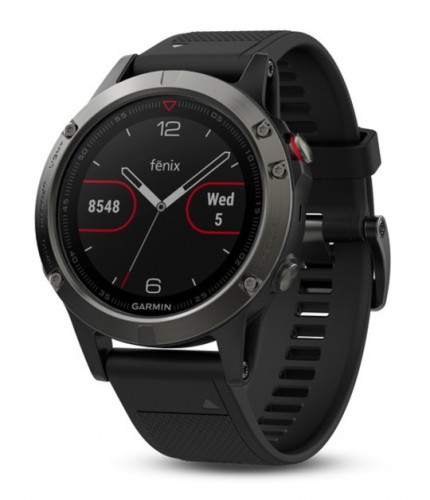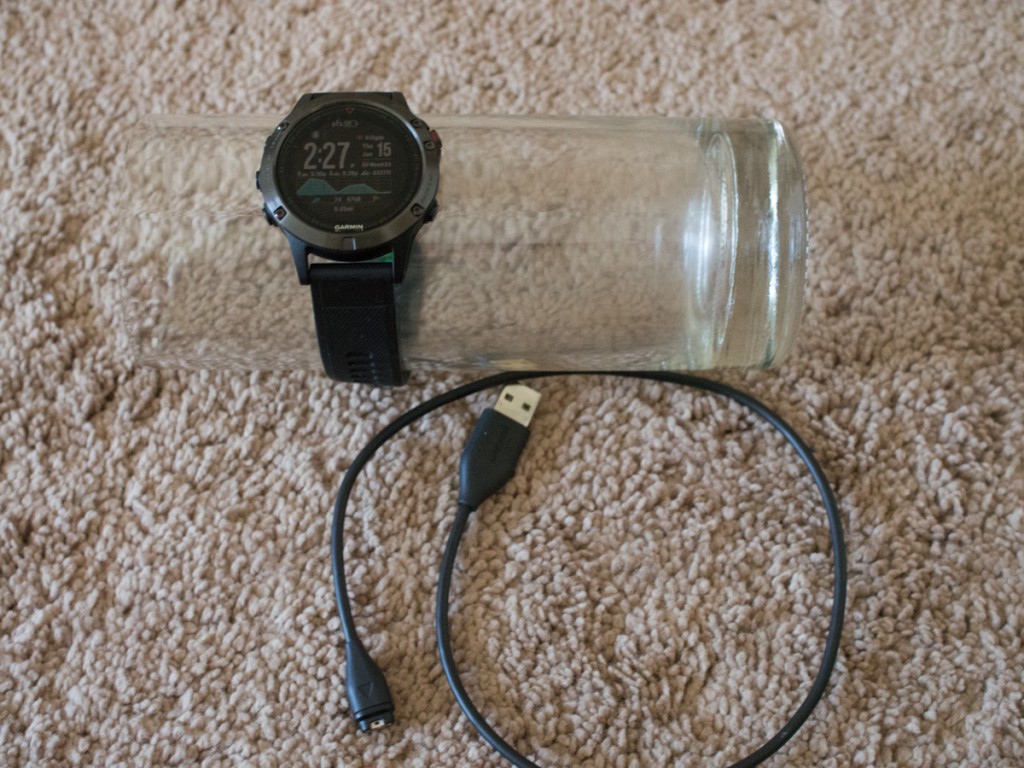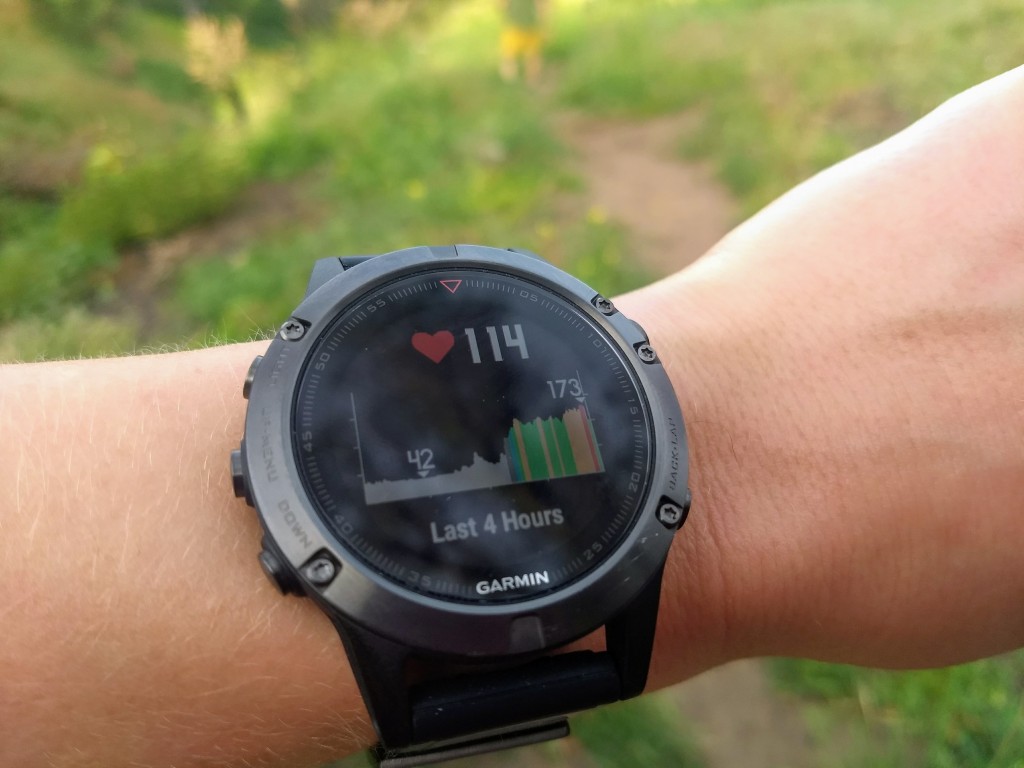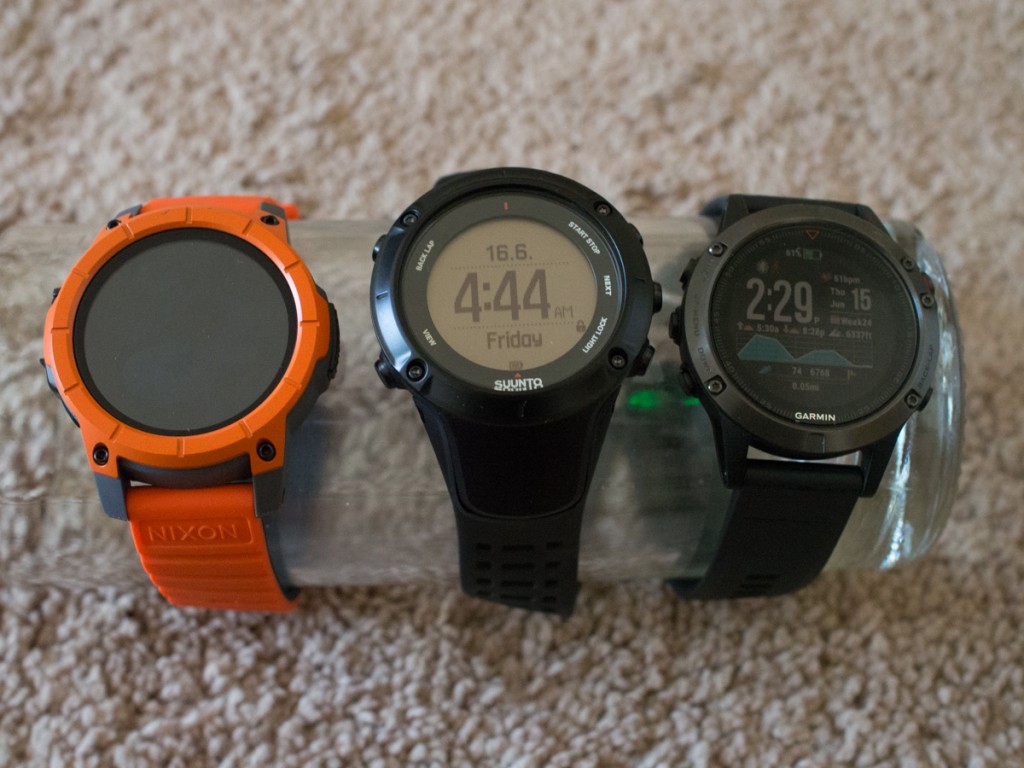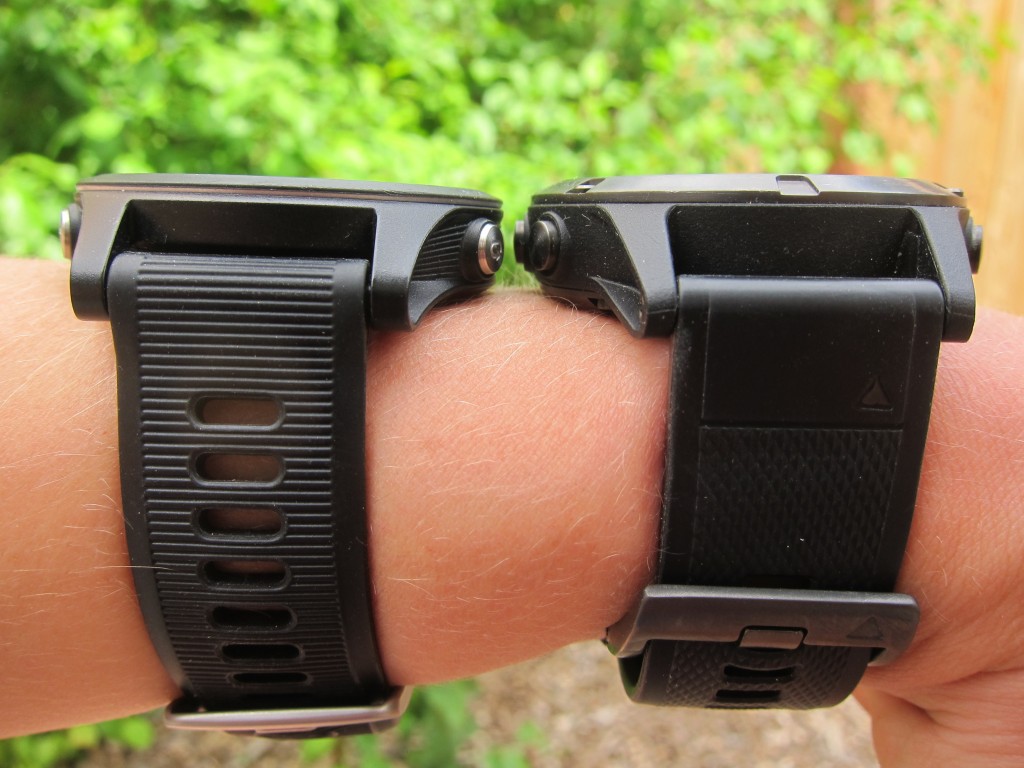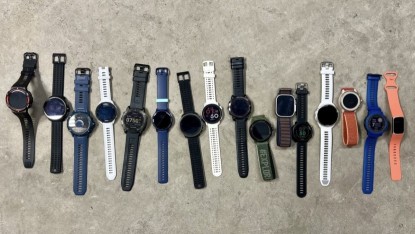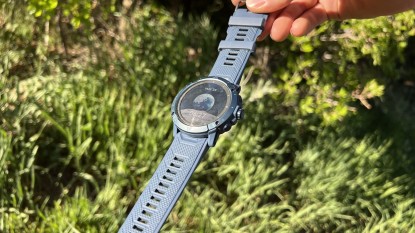Garmin Fenix 5 Review
Our Verdict
Our Analysis and Test Results
Garmin now makes the Fenix 5 in two additional sizes. The Fenix 5, with no qualifiers, as we tested it, is in the middle. There are larger ones and smaller ones, with lettered qualifiers and the same features. While the Fenix 5 previously earned the Editor's Choice Award, it was dethroned in our 2018 update by the lighter, slightly more accurate Garmin Forerunner 935.
Performance Comparison
The Fenix 5 scored near the top of the charts in every metric we tested and was only defeated in overall score by the Forerunner 935.
Features
The Fenix 5 is a fully featured product. It has every feature we can imagine in a GPS/training watch, and its feature set is essentially identical to that of our Editor's Choice, the Forerunner 935. With these watches, we weren't compromising between necessary features and those that would be “nice to have” — we really couldn't think of anything to add to the GPS distance and pace, time-keeping, smartwatch features, barometric altimeter, advanced navigation attributes, step count, sleep tracking, built-in optical heart rate, thermometer, and optional after-market external sensors available. In short, the Fenix 5 makes no compromises in features.
Ease of Use
The Fenix 5 delivers the sleek, intuitive experience that we've come to expect from consumer electronics in 2018. Apart from the Forerunner 935 (which was identical to the Fenix 5 in this category), the closest comparison on the market is the Suunto Ambit3 Peak. Both are full-featured, high-end training devices. A big difference, as deduced from extensive experience with all Garmin and Suunto products, is in their respective ease of use. Some primary, yet relatively minor, differences distinguish them from one another. In Garmin's favor is the company's long tenure in the field. Many consumers, and you may be one of them, are already using Garmin's data management software.
Whether you use the PC-based Garmin Training Center, or the online Garmin Connect, picking up the Fenix will allow you to plug and play. In our survey of the market for a GPS training watch, this compatibility was a significant advantage. If you don't already have brand loyalty, however, the gap narrows. The Ambit Peak models are about equal to the Fenix in terms of interface. Specifically, the Suunto picks up GPS signal a little faster at the beginning of your training, and the Suunto online interface uses Google maps for route planning. The non-branded maps used by Garmin Connect are slightly less detailed.
The other Garmin devices we tested use the same “Connect” interface. All sync smoothly and easily with the smartphone version, which in turn collates data in a format that is visible with the web-browser accessed Connect platform. Other watches and platforms are also quite easy to use.
Battery Life
For a fully featured, reasonably sized GPS watch, the Fenix 5's battery endurance is remarkably good. In day-to-day use, with occasional normal-length (1-2 hours) training sessions, we have been able to go just under a week between charges. For more extensive GPS use, the battery lasts less long. When we tracked a continuous GPS activity until the battery died, the Fenix 5 lasted just over 20 hours — impressive, but again, slightly less impressive than the Forerunner 935, which lasted over 21 hours. The 935 was also quicker to charge.
In extensive use of both comparably featured devices, we found the battery life of the Fenix 5 to be just a little better than the Suunto Ambit3 Peak. This is especially notable considering that the Garmin is smaller and has the optical heart rate sensor working all the time. Comparison to all the other devices is inappropriate, as the rest have considerably fewer features.
Accuracy
To test accuracy, we used each watch in our test to record two sets of two laps around the inside lane of a standard 1/4-mile running track. In 2017, the Fenix 5 measured an average 3% error. In our 2018 update, the Fenix 5 was bang-on each time. In general, accuracy improved in our 2018 update.
We also analyzed the GPS tracks recorded by each watch after our runs, and this was one area where the Fenix 5 performed slightly less well than the Forerunner 935. We consistently saw the Forerunner 935 record tracks that adhered to our known routes better than the Fenix 5, and the paces recorded by the 935 were also more consistent and accurate. The differences were not huge, and both watches performed very well, but the 935 was just a bit better.
Design
For a full-featured watch, especially one with such good battery life, the Fenix 5 is pleasantly small — though it is significantly heavier and taller than the Forerunner 935, such that we felt a real difference between the two watches on runs.
Compared to the rest of the test group, the Fenix 5 is thinner than the Suunto Ambit3 Peak. Additionally, the Fenix 5 can be purchased with the same features, but varying battery life, in both a smaller and larger version than what we tested. We tested the unqualified Fenix 5, while the Fenix 5S is smaller and the Fenix 5X is larger. They all have the same features and vary only in battery life and some navigation attributes.
Ease of Set-Up
Evaluating “Ease of Set-Up” is almost becoming moot. Compact modern electronics, networked with a smartphone like all these watches are, are equipped with set-up interfaces that are remarkably complete. We experience, anymore, precious little variation in the set-up procedure between one product and the next. The Garmin is no exception. All you need to do is charge it, download the app to your phone, and follow the instructions on the app.
There are only minor variations between the products in this category. Notably, the Polar M400 took almost an hour to sync initially. There is also the generalized, open source Google “Android Wear” app. This app is shared by a number of smartwatches and isn't optimized for athletes. One can deduce important info, but it isn't as easy to get going as the apps from Garmin and the others.
Value
The Fenix 5 isn't cheap. While we think the Fenix 5 is worth the cost, we recommend the Forerunner 935, which is lighter and a slightly better product.
Conclusion
Garmin hit the ball into the stands with the Fenix 5, but then they hit it out of the park with the Forerunner 935. The Fenix 5 is fully featured, has excellent battery life and is a snap to use, but as progress marches on in this category, there are now better options out there.


